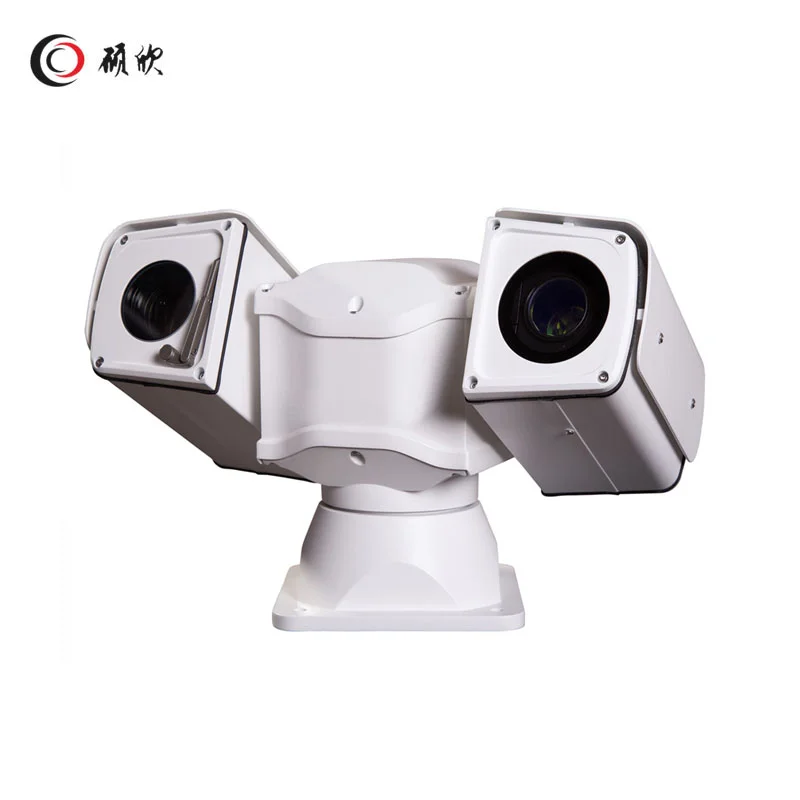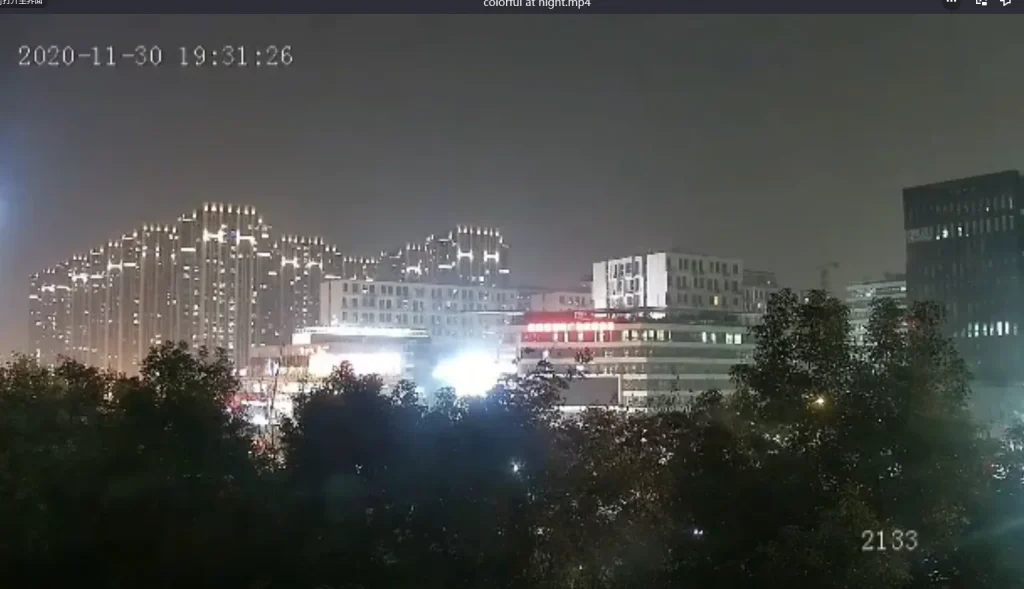야간 시각 카메라는 밖에서 어두운 시간을 볼 수 있습니다.그들은 적외선 (IR) 조명이나 별빛 센서라는 두 가지 큰 방법을 사용합니다.IR 카메라는 눈에 보이지 않는 광선을 보내어 검은색 사진을 만들어, 전혀 빛이 없는 장소에 적합합니다.스타라이트 카메라는 달과 같은 작은 조각의 빛을 잡아 도시와 같은 빛이 있는 지점에서 다채로운 이미지를 보여줍니다.IR은 슈퍼 어두운 지역에서 멀리 볼 수 있도록 훌륭합니다.별빛은 조금 빛이 있는 곳에서 더 좋습니다.당신은 전력 요구 사항, 관리, 색상을 보거나 당신이 원하는 것을 기반으로 선택합니다.일부 카메라는 양쪽으로 혼합되어 있으며, 열 카메라는 안개나 연기에서 잘 작동합니다.
야간 비전 카메라의 핵심 기술은 무엇입니까?
야간 감시 이미징의 기본 사항 : 야간 시각 카메라는 어두움에서 어떻게 볼 수 있습니까?
야간 시각 카메라는 어두운 시간이나 어두운 시간에 사진을 찍습니다. 적외선 (IR) 광선과 별빛 센서라는 두 가지 주요 도구를 사용합니다.IR 카메라는 눈에 보이지 않는 빛을 빛나게 합니다.스타라이트 카메라는 작은 양의 자연 또는 인공 빛을 잡아 명확한 이미지를 만듭니다.각 종류는 다른 직업에 좋습니다.그들이 어떻게 작동하는지 배우면 당신의 요구에 가장 적합한 것을 선택할 수 있습니다.
IR 기술이 보이지 않는 조명을 사용하여 낮은 빛 가시성을 가능하게 하는 방법
IR 카메라는 사람들이 볼 수 없는 적외선을 보내고 있습니다.이 빛은 물건에 충돌하고 카메라의 센서로 반복합니다.센서는 검은색 및 백색 그림을 만듭니다. 그래서 IR 카메라는 슈퍼 어두운 장소에 좋습니다.예를 들어, a 500m 야간 시력 레이저 차량 PTZ 카메라 강한 레이저 광선을 주주주목되지 않고 큰 공간을 조명시키기 위해 주주주목되지 않고.이것은 국경과 같은 큰 지역을 조용히 보는 데 완벽합니다.

스타라이트 카메라가 자연스러운 이미지를 캡처하는 데 전통적인 IR와 다르게 만드는 것은 무엇인가?
스타라이트 카메라는 빛을 스스타라이트 카메라는 빛을 스스스스타라이트 카메라는 빛을 스스스스타라이트 카메라는 빛을 스스스스스타라이트그들은 별이나 거리등과 같은 가장 작은 조각의 빛조차도 감지하는 매우 강력한 센서를 가지고 있습니다.이것은 이상한 밝은 점이 없이 밝고 다채로운 사진을 만드는 데 도움이됩니다.그들은 항상 약간의 빛이 주변에 있는 도시에서 멋진.또한 색상을 보여주기 때문에 녹색 셔츠나 빨간색 차와 같은 것을 IR 카메라가 놓치는 것을 발견할 수 있습니다.
빛이 적거나 없을 때 카메라는 어떻게 작동합니까?
어두움에서 이미지 명확성과 세부 사항: 어떤 카메라가 더 정확한 시각을 캡처합니까?
검은 점에서 IR 카메라가 가장 좋습니다.그들은 그들의 빛을 만들어, 그래서 그들은 무엇이든 명확하게 볼 수 있습니다.A 150m 야간 시력 차량 PTZ 카메라 어두운 장소에서 중간 거리에 좋은 일을 합니다.하지만 조금의 빛이 있는 지역에서는 별빛 카메라가 더 좋습니다.그들의 센서는 이러한 지점의 IR 카메라보다 더 그들그들의 사진을 더 깨끗하게 만듭니다.
밤에 색상 재생과 시각적 정확성: 여전히 진정한 색상을 볼 수 있습니까?
IR 카메라는 흑백 사진만 보여줍니다.그것은 보이지 않는 빛을 사용하기 때문에, 빛이 있더라도 색상이 나타나지 않습니다.그러나 스타라이트 카메라는 달이나 멀리 떨어진 램프와 같은 조금의 빛이 있다면 밤에 모든 색상을 표시할 수 있습니다.이것은 도시 보안과 같은 색상을 알아야하는 직업에 매우 유용합니다.
각 카메라 유형은 밤에 얼마나 멀리 볼 수 있습니까?
적외선 조명 거리 및 범위: 얼마나 많은 영역이 점화합니까?
큰 LED 또는 레이저를 가진 IR 카메라는 거대한 영역을 밝게 할 수 있습니다.A 50M 야간 비전 PTZ 50M 50M 야간 비전 작은 또는 중간 공간을 잘 커버합니다.더 강한 사람들, 마찬가지로 500m 야간 시력 레이저 차량 PTZ 카메라멀리 보고, 도로나 국경을 보는 데 좋습니다.그러나 어떤 것이 너무 멀리 떨어져 있다면 카메라는 그것을 볼 수 없습니다.
외부 광원 없는 스타라이트 카메라 성능: 정말로 자충?
스타라이트 카메라는 빛이 필요하지 않습니다.그들은 달이나 램프와 같은 가까운 모든 빛을 사용합니다.조명이 없는 시골 지역에서는 달이 없는 한 잘 작동하지 않을 수 있습니다.하지만 도시에서는 항상 조명이 있기 때문에 좋습니다.어두운 빛에서 색상을 보여주는 트릭은 많은 실제 직업에서 IR보다 더 나은 것을 만듭니다.
어떤 유형이 다른 환경에 더 잘 적응합니까?
IR 및 Starlight 카메라의 실내 vs 야외 응용 프로그램: 어디에 가장 적합합합니까?
저장 또는 홀과 같은 실내 장소에서 어두운 곳에서 IR 카메라는 최고의 선택입니다.그들은 자신의 빛을 만들어, 그래서 전력이 그들그들이 그들그들은 전력이 그들그들의 자신의 빛을 만들어, 전력이 그들 그들이 작동합니다.외부는 당신이 어디에 있는지에 달려 있습니다.필드와 같은 조명이 없는 멀리 떨어진 곳에서 레이저 기반 IR 카메라는 매우 멋집니다.조명이 있는 도시에서는 별빛 카메라가 더 좋습니다. 왜냐하면 그 빛을 사용하여 명확하고 다채로운 사진을 만들기 때문입니다.구형 광전기 고정의 PTZ 카메라는 강하고 내부 또는 외부에서 훌륭하게 작동합니다.그들은 비나 바람을 처리하는 힘든 커버와 멋진 이미지를 위해 스마트 기술을 가지고 있습니다.
밤에 도시와 농장 환경의 성능 : 어느 하나가 각각을 더 잘 처리합니까?
건물이나 자동차의 조명이 있는 활기찬 도시에서 스타라이트 카메라는 놀라운 것입니다.그들은 밤에도 날카로운 다채로운 비디오를 만듭니다.조용한 시골에서 조명이 없는 곳에서, 레이저 야간 비전 PTZ 카메라 시스템은 가는 길입니다.그들은 자신의 빛을 만들고 농장이나 숲과 같은 큰 열린 장소를 쉽게 볼 수 있습니다.
이 카메라는 스마트 감시 시스템에 통합될 수 있습니까?
PTZ 기능과 호환성 및 스마트 추적: 충분히 유연합니까?
오늘날의 보안은 어두운 속에서 보는 것보다 더 필요합니다. 움직이는 물건을 따라갈 수 있는 카메라를 원합니다.IR 및 Starlight 카메라는 Pan-Tilt-Zoom (PTZ) 시스템으로 작동합니다.그러나 레이저 기반 IR 카메라는 광선이 너무 그러기 때문에 멀리 떨어진 곳에서 물건을 추적하는 데 좋습니다.양분광 장거리 열 이미징 PTZ 카메라는 열 감지를 일반적인 비디오와 혼합합니다.이 쌍은 움직임을 발견하거나 스스로 물건을 따르는 것과 같은 스마트 트릭에 완벽합니다.
네트워크 연결, 스토리지 및 원격 모니터링 옵션: 미래에 적합합합니까?
스타라이트 카메라와 IR 카메라는 모두 새로운 기술을 사용합니다. ONVIF 규칙을 사용하여 네트워크 비디오 레코더 (NVR), 클라우드 스토리지 또는 전화 앱에 쉽게 연결하여 어디서든지 확인할 수 있습니다.이것은 미래의 보안 계획에 대해 준비되어 있기 때문에 어디에 있든 항상 책임이 있습니다.
시간에 따라 전력 사용과 유지보수는 어떻게 되나요?
IR 및 Starlight 단위 사이의 전력 소비 차이점: 어느 것이 더 효율적입니까?
IR 카메라는 LED 또는 레이저가 밤새 켜져 있기 때문에 더 많은 전력이 필요합니다.스타라이트 카메라는 자신만을 만드는 대신 근처 빛을 사용하기 때문에 전력을 절약합니다.카메라를 많이 가지고 있거나 멀리 떨어진 장소에서 태양 전력을 사용하는 경우 이것은 큰 문제입니다.
시간이 지남에 따라 유지 보수 요구 사항: 어떤 시스템이 더 적은 관심을 요구합니까?
레이저 기반 IR 카메라는 렌즈를 청소하기 때문에 먼지가 빛을 막지 않도록 조금 조심이 필요합니다.스타라이트 카메라는 깨질 수 있는 빛이 빛나는 부품이 없기 때문에 작업이 적습니다.두 종류는 어려운 장소에 강한 경우에 있습니다.예를 들어, the 레이저 차량 PTZ 사진기 부터 슈오신 도로나 트럭과 같은 거친 야외 작업을 위해 만들어져 있으며 오랫동안 견고하게 유지됩니다.
어떻게 IR 카메라와 스타라이트 카메라를 선택해야 합니까?
귀하의 요구를 충족시키는 야간 비전 카메라를 선택할 때 고려해야 할 요소
보안 설정이 필요한 것을 생각하십시오.
- 조명당신의 장소가 어두운 경우, 멀리 떨어진 농장처럼, IR 카메라를 얻으십시오.그것은 그것의 빛을 만듭니다.
- 사진 필요색상을 원하십니까?별빛 카메라를 선택하여 조명이 있는 장소에서 더 명확한 세부사항을 얻으십시오.
- 거리: 고속도로와 같은 멀리 있는 전망을 위해, a 500m 야간 시력 레이저 차량 PTZ 카메라최고입니다.
- 비용 및 가치: 스타라이트 카메라는 센서가 스스타라이트 카메라가 스스스스타라이트 카메라가 멋지기 때문에 처음에는 비용이 더 많을 수 있습니다.그러나 그들은 변화하는 빛에서 더 날카로운 그림을 제공하여 오류를 피함으로써 시간과 돈을 절약할 수 있습니다.
도시 거리에서 멀리 떨어진 장소까지 모든 종류의 보안 작업에 최고의 장비가 필요하다면슈오신 좋은 선택입니다.그들은 열카메라, 이분광 열열열카메라, 도로 관찰 시스템과 같은 멋진 도구를 만듭니다.그들의 물건은 똑똑하고 단단하므로 날씨에 상관없이 수년간 잘 작동할 수 있도록 신뢰할 수 있습니다.
IR 및 Starlight 카메라의 주요 차이점 요약
| 특징 | 적외선 (IR) 카메라 | 스타라이트 카메라 |
| 필요한 빛 | 예 (IR LED/레이저) | 아니요 (가까운 빛을 사용합니다) |
| 그림 유형 | 블랙백색 | 다채로운 (어두운 빛에서) |
| 얼마나 멀리 보이는지 | 최대 500m (레이저로) | 근처 빛에 따라 달라집니다. |
| 전력 사용 | 더 | 적은 |
| 최고의 장소 | 슈퍼 어두운 / 시골 지역 | 조명/도시 지역 |
감시 요구 사항에 따라 이상적인 사용 사례
빛이 없는 어두운 곳에서 명확한 시각이 필요하다면 IR 카메라를 선택하십시오.당신의 지역에 조명이 있고 밤에 날카로운 다채로운 사진을 원하는 경우 스타라이트 카메라를 선택하십시오.
자주 묻는 질문
Q1: 별빛과 적외선을 함께 사용할 수 있습니까?
A: 예!일부 카메라는 두 가지를 혼합합니다.그들은 조금의 빛이 있을 때 별빛을 사용하고 슈퍼 어두운 때 IR로 전환합니다. 카메라는 얼마나 많은 빛이 있는지에 따라 선택합니다.
Q2: 레이저 야간 비전 PTZ 카메라는 사람들을 위해 안전합니까?
A: 확실히!그들은 보안 장비에 대한 세계 안전 규칙을 따라 정상적인 사용에서 눈에 안전한 클래스 1 레이저를 사용합니다.
Q3: 어느 것이 안개나 연기에서 더 잘 작동합니까?
A: 일반적인 별빛과 IR 카메라는 안개나 연기에 좋지 않습니다.대신 다분광 장거리 열영상 PTZ 카메라를 시도하십시오.그들은 빛이 아니라 열을 볼 수 있기 때문에 안개나 연기가 그들을 막지 않습니다.


